Florida bills open the door to demolishing iconic Miami Beach and Key West sites
A pair of related bills rapidly advancing through the Florida Legislature would eviscerate protections for historic buildings and districts in coastal areas across the state, allowing property owners and developers to bypass local regulations and bulldoze and redevelop much of Miami Beach, among many other places.
That would include the iconic Art Deco hotel row on Ocean Drive as well as famed neighborhoods such as Key West’s Old Town, the town of Palm Beach and Fernandina Beach.
The bills, SB 1317 and HB 1346, sponsored by Republicans Sen. Bryan Avila and Rep. Spencer Roach, are causing alarm among preservationists and municipal officials statewide, including shocked elected officials in St. Augustine — the oldest city in the United States — as they realize their potentially devastating implications. One preservation group in Miami Beach called the legislation “the end of historic preservation in coastal Florida.” Another critic likened it to “an atom bomb.”
“It’s one of the worst proposals I’ve ever seen,” said a livid state Rep. Cyndi Stevenson, a Republican whose district includes St. Augustine. “Everybody that cares about the character of their coastal community should be concerned about it. They should be raising questions.”
The bills are the latest, and perhaps the most dramatic and consequential, of rapidly advancing, developer-friendly measures in the GOP-dominated legislature and aim to supercharge development by preempting or overriding local zoning controls regarding suburban sprawl, urban density and other issues.
The preservation-preemption bills, which exempt single-family homes, would prohibit local officials from blocking the demolition of any other buildings, including those designated as historic, that sit within a half-mile of the coast or within an extensive series of flood zones delineated by the Federal Emergency Management Agency — if they don’t meet the U.S. agency’s standards for new construction. By definition, virtually no historic buildings conform to those rules.
Senate sponsor Avila, a Republican representing Northwest Miami-Dade, said the goal is to ensure the resiliency of coastal communities by promoting the replacement of older buildings with new structures that meet up-to-date FEMA rules for flood- and storm-surge resistance in order to obtain insurance under the National Flood Insurance Program. He and Roach insisted their bills are “narrowly tailored” to ease the way for construction of safer buildings under federal regulations that call for flood-resistant materials and elevated structures in vulnerable areas.
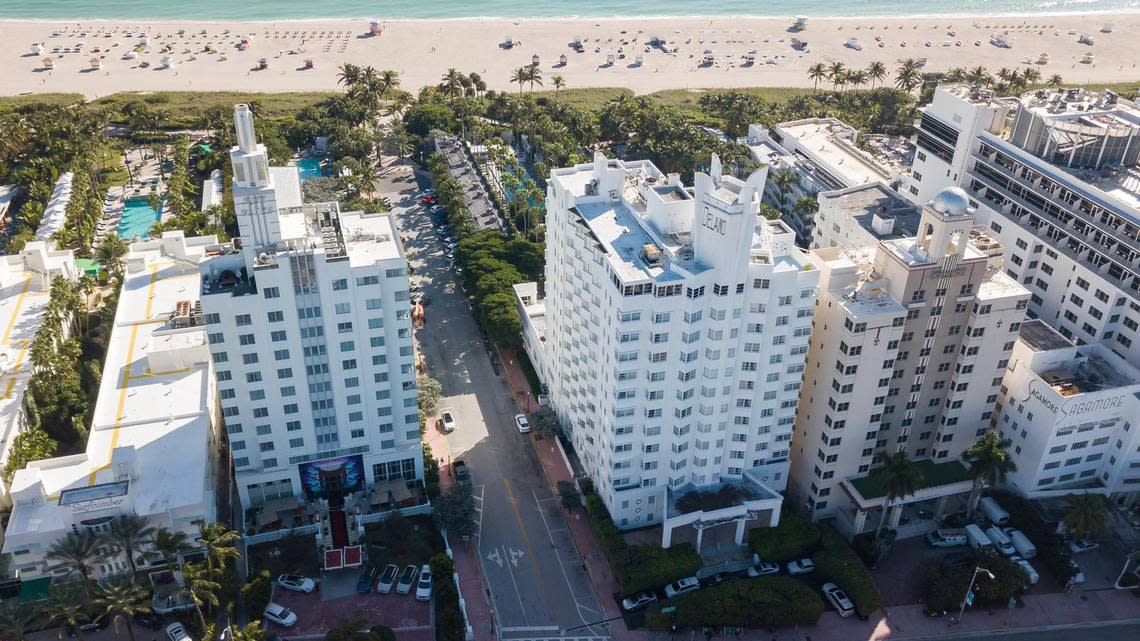
Roach, a North Fort Myers lawyer, said his bill was necessary because preservationists have for too long used their historic buildings “as a cudgel” to avoid replacing them with safer buildings.
He has met with local officials and is working on amendments that he said will clarify that the measure is not intended to line Florida’s coast with more condominium canyons. The bill comes up for a vote next week.
“I have told them I am not going to go down in history as the guy that puts a skyscraper in St. Augustine, in Miami’s Art Deco district, in Palm Beach or in Pensacola,’’ he said in an interview Monday. “That is not the intent of the bill and the narrow language is designed to prevent that.”
Potential demolition derby?
But critics say the bills are anything but narrow. They say the bills, which contain no analysis of impact, are so broadly written that the result will be a demolition derby as developers seize the chance to tear down historic buildings to clear and flip properties — a common practice in older areas poised for redevelopment known as speculative demolition. They say the measures could be destructive for the historic fabric of their communities and their economies.
The bills would give property owners the right to demolish any building for any reason in the designated zones without so much as a public hearing, with the exception of a relative few listed on the National Register of Historic Places, an honorary designation that by itself confers no protections.
Because many of the state’s oldest and historic neighborhoods and districts sit along the coast, the bills, if approved, would open tens of thousands of structures now protected as landmarks under local ordinances to potential demolition. Advocates say 84 local jurisdictions across the state have historic-preservation programs.
The bills also prevent those local jurisdictions from limiting the scale of replacement buildings to conform to historic neighborhood scale or requiring that they replicate or preserve some historic elements, though the new structures must still meet local zoning rules. In practice, that would mean in many, if not most cases, that developers will be able to build bigger, denser replacement structures, putting potentially thousands of new residents in high-hazard flood zones, critics say.
Another section of the bills would allow demolition of any building anywhere in the state, even if designated as historic, that a local building official has declared unsafe — even though procedures to do so already exist.
The measures also would prohibit local officials from requiring that a historic building that an owner has allowed to slide into ruin replicate all or a portion of the original if it has to be torn down, or to limit the new structure to historic scale. The target is ordinances passed by many municipalities, including Miami Beach, designed to discourage owners of historic buildings from engaging in what’s known as “demolition by neglect.”
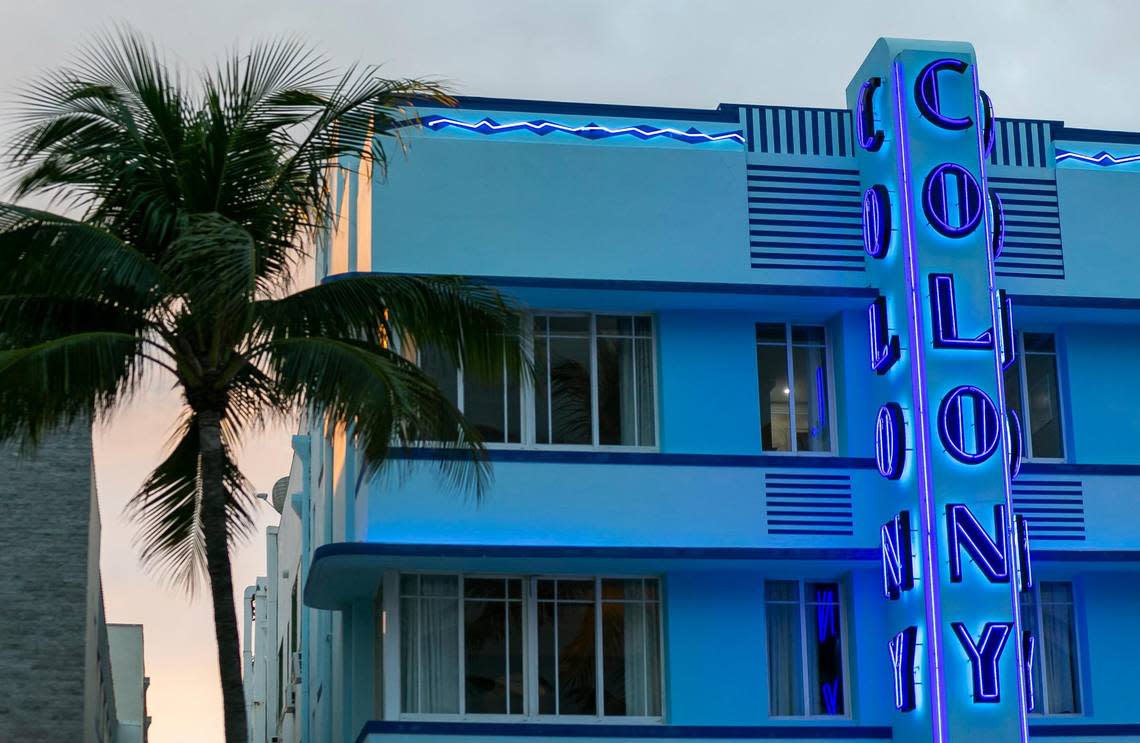
Lifting those rules, critics say, will again encourage property owners to allow historic buildings to fall into disrepair in order to obtain an order to demolish.
“This is a very dangerous bill, and it is full-steam ahead,” Miami Beach Commissioner Alex Fernandez said. “It is a train that is going to wreck our historic districts. It has nothing to do with resiliency. It has to do with the resiliency of the profits of big developers. Building bigger buildings does not do anything for resiliency. This bill is all about circumventing our historic-preservation regulations. That could not be more clear.”
’Canceling Miami Beach’
Virtually all of low-lying Miami Beach — famed for historic neighborhoods and hotels that draw millions of tourists — sits within the zones affected by the bills. City officials estimate the bills would expose as many as 2,600 Beach buildings that are now protected as historic or architectural landmarks to demolition with no appeal.
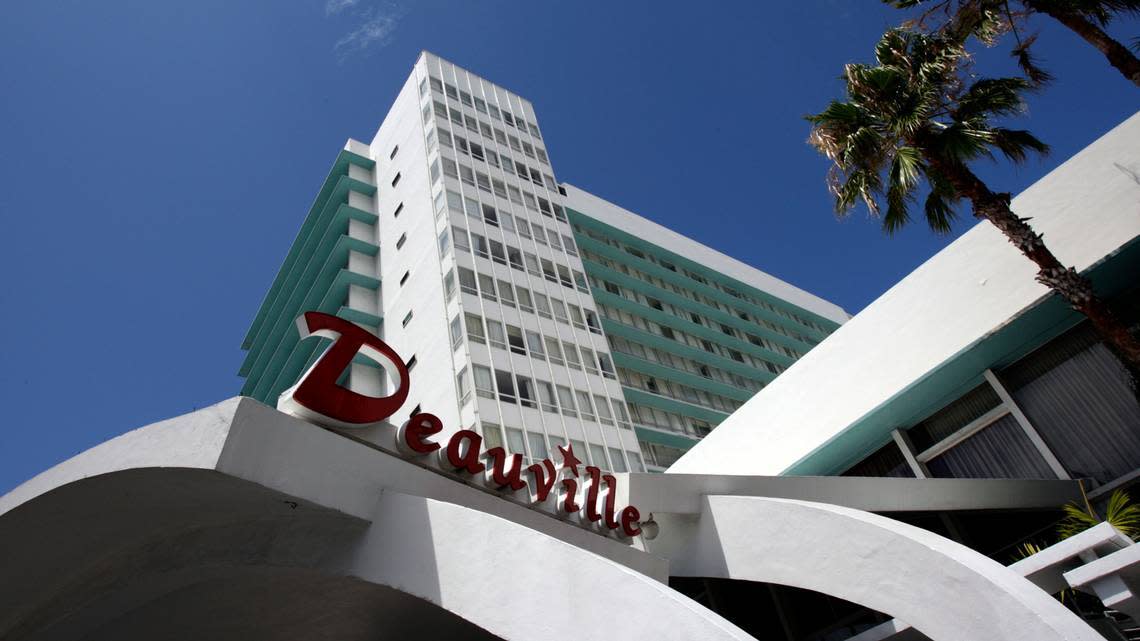
“It sounds like a targeted, sweeping bill canceling Miami Beach,” said Daniel Ciraldo, executive director of the Miami Design Preservation League, the group that spearheaded creation of the city’s first historic districts decades ago under the leadership of legendary activist Barbara Capitman. “Here, 40 years-plus of preservation goes down the drain.
“Ocean Drive is like our city’s postcard. Under this bill, these buildings would be considered automatically nonconforming and subject to demolition. Someone could file a paper, process it at the city, and here come the bulldozers. It’s very scary.”
Creation of the city’s 14 historic districts, starting in the 1980s with the designation of the original Art Deco district centered on Ocean Drive, is widely seen as the multibillion-dollar tourism and economic-development engine behind the resurgence of Miami Beach and, eventually, its neighbor across Biscayne Bay. Before the districts, city leaders and property owners wanted to tear down the Art Deco hotels and apartment buildings to clear the way for hotel and condo towers.
The city of Miami has also established historic districts, such as the Miami Modern, or MiMo, district along Biscayne Boulevard, and individual landmarks that helped spur extensive renovations and development. To be protected as landmarks, buildings, sites and neighborhoods must meet strict criteria established under federal law for architectural or historic significance.
The FEMA flood zones stretch well inland along bodies of water, including into the city of Miami along the Miami River and drainage canals into Coral Gables, as well as Fort Lauderdale and most coastal cities in the state, opening up historic properties in broad swaths of those jurisdictions to demolition as well.
“Be careful,” Coral Gables Mayor Vince Lago warned legislators in a legislative hearing this month. “We have reaped the benefits of historic preservation. What you will see if this bill passes, what we fear we’re going to see, is incredible amounts of speculative buying with the intent to demolish these historic gems.”
Imposing stronger flood standards
Roach said his intention is to make it easier for property owners in his district to rebuild after Hurricane Ian.
“The problem we’ve run into is there are some local jurisdictions that have made it near impossible to rebuild these commercial structures in a way that makes sure they can rebuild it in the future and that they can withstand future storms,’’ he said.
Roach said the requirement that replacement structures meet underlying zoning sufficiently protects local jurisdictions, while arguing that some municipalities use historic designation to require reconstruction of buildings that don’t meet FEMA flood standards. He did not provide examples.

FEMA provides exemptions and standards to encourage renovation and strengthening of historic structures. That has been a common practice in historic preservation in places such as Miami Beach, where developers can build modern additions to historic hotels and other buildings while beefing up their capacity to withstand flooding. The city is also spending hundreds of millions of dollars to build seawalls and beach-dune systems to blunt storm surge and inundation.
Rep. Stevenson, who also serves as chair of the House Water Quality, Supply and Treatment Subcommittee, said she fears the bill could stimulate coastal construction of high-rises that do not have adequate water treatment and sewage facilities, do not provide sufficient water pressure for residents, and do not have safe evacuation opportunities in a hurricane.
If this becomes law, “we have no way of going backwards once we give property rights,’’ the lawmaker said. “There’s a tremendous financial penalty for going backwards. So we should be very careful about going forward.”
While the House version of the bill has narrowed the scope to retain some local control, Avila’s Senate bill has moved with bipartisan support with none of those changes.
Avila has rejected amendments proposed by Miami Beach officials, preservationists and state Sen. Shevrin Jones, a Democrat whose district includes a portion of that city, to exempt properties designated historic by local authorities and those included in districts listed on the National Register of Historic Places.
The vast majority of properties on the register, run by the National Park Service, are included in such districts, but the bills would exempt only those individually listed — a label reserved for only the most significant ones.
Miami Beach has only seven properties individually listed, Those include the Fontainebleau Hotel, but none on its most famous strip, Ocean Drive.
As a consequence, said Miami Beach land-use attorney Kent Harrison Robbins, “all the iconic hotels on Ocean Drive could be demolished.”
“I’m not saying they will be. But they could be,” he said.
Pushing despite opposition
Avila did not respond to requests from the Miami Herald for an interview. Municipal officials and preservationists complain he has not responded to pleas to meet or discuss his bill.
At a committee hearing last week, Avila appeared to sometimes misrepresent the impact of his bill, insisting erroneously that only structures deemed “unsafe” by a local building official would be subject to demolition.
He also seemed to misapprehend the different roles of the National Register listings, which are purely honorary, and local designations, which protect structures from demolition and require review by preservation officials and boards of renovations and additions.
He noted what he called a “discrepancy” between the seven register listings on the Beach and the 2,600 buildings protected under city zoning rules as individual properties or as part of districts, without acknowledging that many of the latter are also included in districts recognized by the National Register. The city has three National Register districts containing hundreds of hotels and apartment and commercial buildings in South Beach, North Beach and along Collins Avenue.
“It leads one to question whether a lot of these sites have any historic significance,” Avila said, adding while guffawing: “My house is older than the Fontainebleau. Does that make it historic?”
Avila also insisted St. Augustine would not be affected because it’s on a river more than half a mile from the coast. But St. Augustine Mayor Nancy Sikes-Kline told preservationists in a public webinar last week that city officials who closely examined flood maps think the city sits in the target zone.
Critics have been surprised at how the bills have sailed through committees with little scrutiny and now are ready for floor votes, probably next week as the session draws to a close on May 5. Who is behind them, however, remains something of a mystery.
Unusually, no proponents or supporters of the bills have testified to legislative committees save for members of a fringe “free market” group. The bills have drawn opposition from officials from, among others, Miami Beach, Miami-Dade County, St. Augustine, Coral Gables, Pensacola, Palm Beach, the Florida Trust for Historic Preservation and the Florida League of Cities. Some smaller affected towns with significant historic properties appear not to be aware of the legislation or understand its potential consequences.
For instance, an administrator in Fernandina Beach, a town that is on Amelia Island north of Jacksonville and has two famous historic areas, erroneously said when contacted by a Herald reporter that those would be exempt from the bills because they’re on the National Register of Historic Places as districts.
Developers deny a role
In Miami Beach, preservation advocates surmised that well-heeled developers frustrated with the city’s strict rules could be pushing behind the scenes for passage of the bills. Some owners of vacant historic buildings — such as the iconic Deauville Hotel, which preservationists cite as an example of demolition by neglect — have jousted with the city over their preservation and would likely benefit from the legislation.
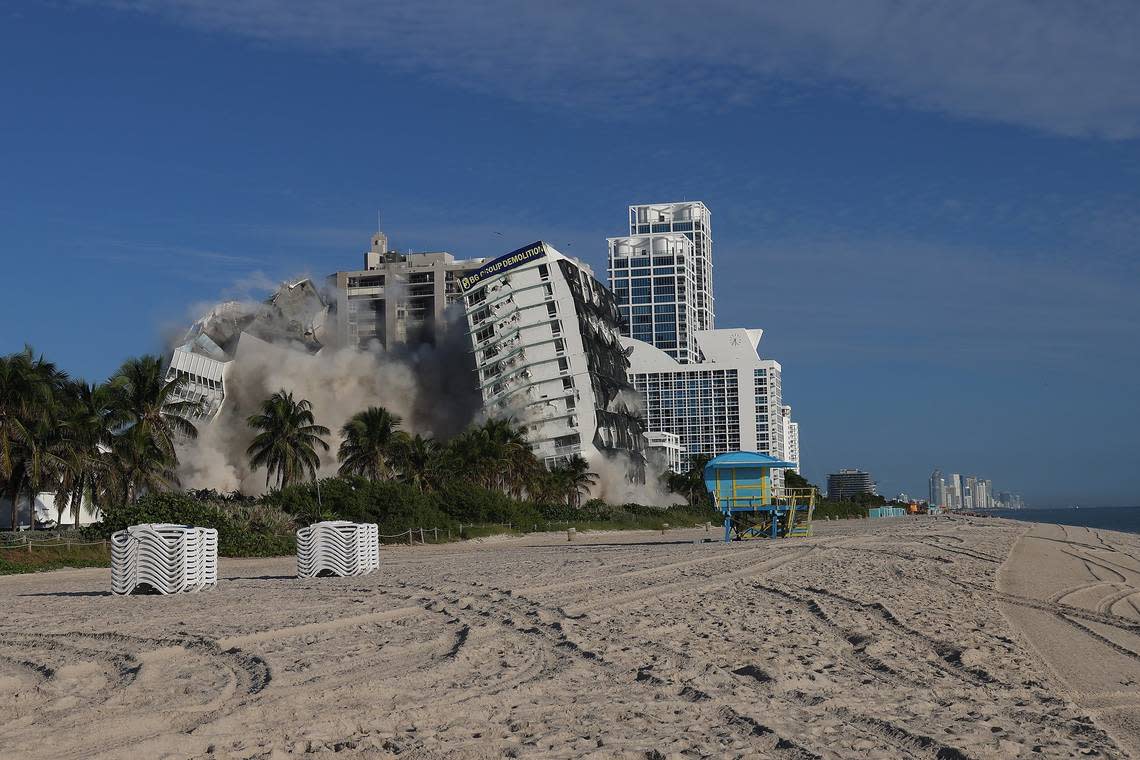
The Deauville was demolished in November following years of court battles after a city building official deemed it a hazard. And a $1 million campaign by billionaire developer and Miami Dolphins owner Stephen Ross failed to win voter approval for a pair of towers taller than existing zoning allows.
It’s unclear if Ross, who had a deal to buy the property from its current owners, still plans to pursue a project there, but any development would be subject to approval by the city’s Historic Preservation Board — a requirement that would disappear under these bills.
Neisen Kasdin, an attorney for Ross and a former Miami Beach mayor, said Ross “has nothing whatsoever to do with this legislation.”
Public records show one local developer, 13th Floor Investments, which owns a vacant, designated Art Deco building on the Collins Avenue beachfront, gave $10,000 to a political-action committee chaired by Avila one day before he filed the bill, and $10,000 three days later to Roach’s PAC. The firm had previously given $5,000 to Avila’s PAC in 2021 when Avila was running for the Miami-Dade County Commission.
The real estate development and investment firm, led by partners Arnaud Karsenti and Rey Melendi, has a contract to buy an adjacent designated building, also vacant, with plans to redevelop the two structures jointly, the city has said. This year, the developer, also represented by Kasdin, was hit with a violation for failing to maintain one of the properties — the shuttered Patrician Hotel on Collins Avenue. A special magistrate ordered the developers to prevent further deterioration and said that if they want to demolish the structure, 13th Floor would need approval from the Historic Preservation Board. The bills would lift that stricture.
In a statement released through a spokesman in response to questions from the Miami Herald, 13th Floor, which has also given $5,000 to the Miami Design Preservation League, said the checks to Avila and Roach were unrelated to the bills.
“Like any Florida businesses, 13th Floor Investments supports various elected officials and candidates each year,” according to the statement. “These contributions are directed toward individuals and are not intended to advance specific issues or legislative items.”
Roach, however, conceded that ”property owners all over the state, including in my county, are going to see an opportunity with this, as well they should.”
“The intent of the [House] bill is to allow people to rebuild property that is insurable and still conforms to local zoning codes,” he said.
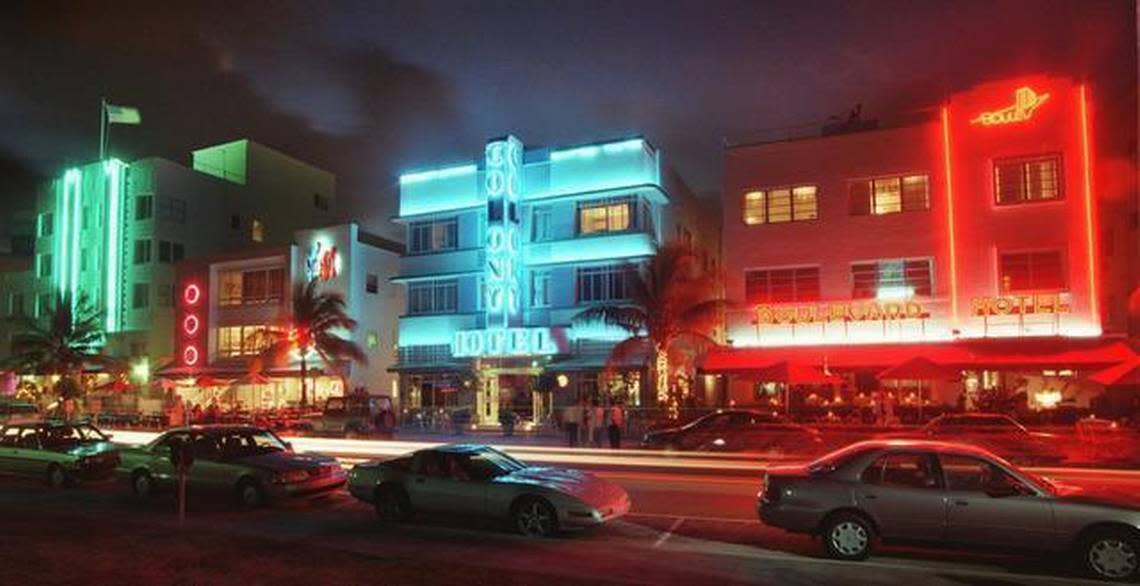
To Miami Beach Mayor Dan Gelber, though, the likely consequences for the city and its historic districts are “inconceivable.”
“Historic architecture is what makes these places so special. I can’t imagine Ocean Drive without those beautiful historic buildings,” Gelber said. “The idea that we could lose any of them is really unthinkable.”